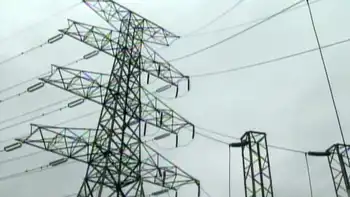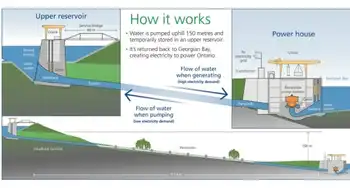Homegrown green power for Ontarians
New rules that require wind and solar projects to have a certain percentage of Ontario labour and product content were welcomed by industry groups, which cautiously described the targets – set initially as 25 per cent for wind and 40 to 50 per cent for solar – as workable.
Premier Dalton McGuinty, who announced the new rules along with a green-power purchase program designed to stimulate the development of renewable-energy projects, said the content targets are not meant to exclude U.S. and other foreign products.
"We just want to lay claim to a significant portion of the jobs that are coming out of this legislation," said McGuinty, who has promised to create 50,000 jobs over the next three years as a result of the province's green-energy policies. But not everyone was applauding. The United Steelworkers said McGuinty didn't go far enough, arguing that an initial target of 25 per cent for wind can be met without wind-turbine manufacturing, which depends heavily on steel, based in Ontario. Developers could meet the target just using local concrete for turbine bases and local constructors, which will happen anyway.
"Setting the domestic content so low will not spur the creation of a manufacturing base to support this industry, and will limit domestic job creation," said Steelworkers national director Ken Neumann.
The government has committed to raising the local content target for wind to 50 per cent on January 1, 2012, and to 60 per cent for solar a year earlier, but the Steelworkers worry developers will rush to get projects approved before 2012 to avoid the higher standard.
But Energy and Infrastructure Minister George Smitherman said the percentages that go into effect right away are a "starting point" and reflective of what the Ontario market can handle today for solar and wind. He said foreign companies have expressed an interest in setting up shop in Ontario, but the targets must be phased in to give industry enough time to retool and ramp up manufacturing.
Local content rules are only part of the attraction. Foreign investors are also being lured by Ontario's new feed-in tariff program (FIT), which McGuinty and Smitherman launched alongside Environment Minister John Gerretsen.
Under the program, electricity generated from the wind, sun, biomass and water can be sold into the grid at a premium guaranteed over 20 years. Rates vary, from a low of 10.3 cents per kilowatt-hour for electricity generated with landfill gas to 80.2 cents for power that comes from small solar rooftop systems.
The government says electricity prices, when conservation is taken into account, should not increase more than 1 or 2 per cent as a result of the program.
Kevin Monsour, a vice-president of Toronto-based energy developer RESCo Energy, called it a "true stimulus package." The Association of Power Producers of Ontario called the program a "bold step" that will change how we think about the electricity system.
It has also caught the attention of Canadian Solar Inc., which is based in Kitchener but manufactures and sells most of its solar modules in China. The $700 million company announced the creation of a subsidiary called Canadian Solar Solutions that will serve the Ontario market and, depending on the final details of the local content rules, set up manufacturing in the province.
"We want to be a major force in this market, and we're going to do whatever it takes to do that," said Milfred Hammerbacher, president of the new subsidiary.
The Ontario Power Authority, the agency that designed and will oversee administration of the FIT program, expects to begin accepting applications October 1 and plans to issue its first 20-year power purchase contracts in early December.
The program is an offshoot of the Green Energy and Green Economy Act, passed in May as a way to boost development of green energy projects and conservation programs.
Among other announcements:
The government confirmed that wind turbines must be set back at least 550 metres from residential properties, unless the surrounding community already has a background noise source that's much higher than the turbine's noise. The Canadian Wind Energy Association said it's an arbitrary rule that will stifle development, while anti-wind groups say the setback is much too low.
No ground-mounted solar projects over 100 kilowatts in size are permitted on class 1 and 2 agricultural lands, or lands where specialty crops are grown. Under some circumstances, development is permitted on class 3 lands up until the total capacity of projects exceeds 500 megawatts.
Related News

USA: 3 Ways Fossil Energy Ensures U.S. Energy Security
WASHINGTON - The global economy has just experienced a period of unique transformation because of COVID-19. The fact that remains constant in this new economic landscape is that our society relies on energy; it’s an integral part of our day-to-day lives. According to the U.S. Energy Information Administration, approximately 80 percent of energy consumption in the United States comes from fossil fuels, so having access to a secure and reliable supply of those energy resources is more important than ever. Below are three examples that highlight how our work at the U.S. Department of Energy’s Office of Fossil Energy (FE)…




